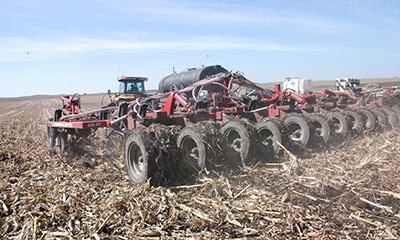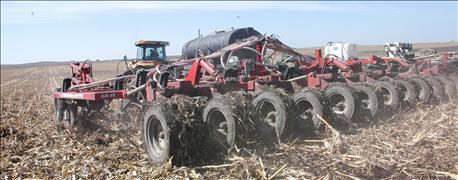January 10, 2016

South Dakota farmers no-tilled about 46% of the crop acres in state in 2015. That's up about one percentage point from 2013, the last time the survey was done by the Natural Resources Conservation Service.
In 2004, about 37% of the cropland acres in the state were no-tilled.
The greatest concentration of no-till acres is in the central part of the state, along either side of the Missouri River. Counties in southwest South Dakota and along the Minnesota power have the lowest concentration of no-till acres.

Soybeans are no-tilled into corn
Counties that had a significant gain in no-till acres since 2013 include Bon Homme, Brown, Buffalo, Butte, Clark, Corson, Codington, Grant, Haakon, Hamlin, Jerauld, Marshall, Meade and Moody Counties. Counites that had a significant loss in no-till systems since 2013 include Bennett, Charles Mix, Hand, Hanson, McPherson, Oglala Lakota, Spink and Ziebach. Day and Spink counties had a decline in no-till acres from 2004 to 2013 and continued to decline acres in 2015.
When faced with challenging situations, such as storm event sand weed pressures, some farmers revert back to tillage for a solution. As conditions change, a shift back to a no-till system occurs," the NRCS report says.
In the future, NRCS hopes to track cover crop acres in the state, too.
"These trends in conservation practices lean toward more sustainable farming and this is good news for South Dakotans," says Jeff Zimprich, head of the South Dakota NRCS.
A summary of the inventory is online at www.sd.nrcs.usda.gov, under "newsroom."
You May Also Like




